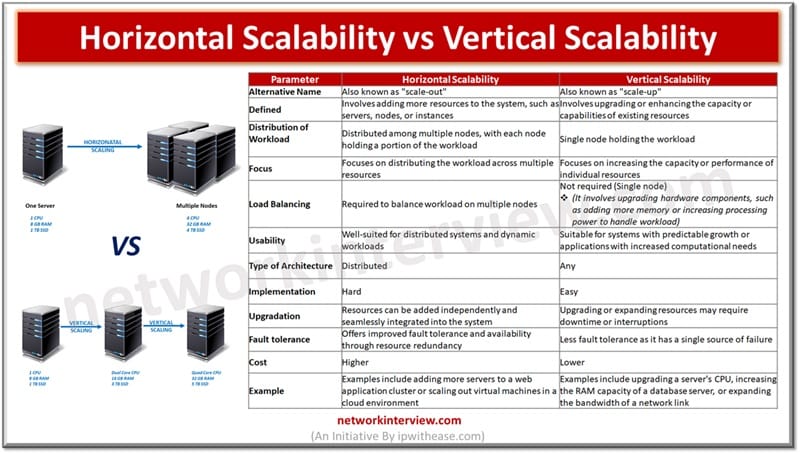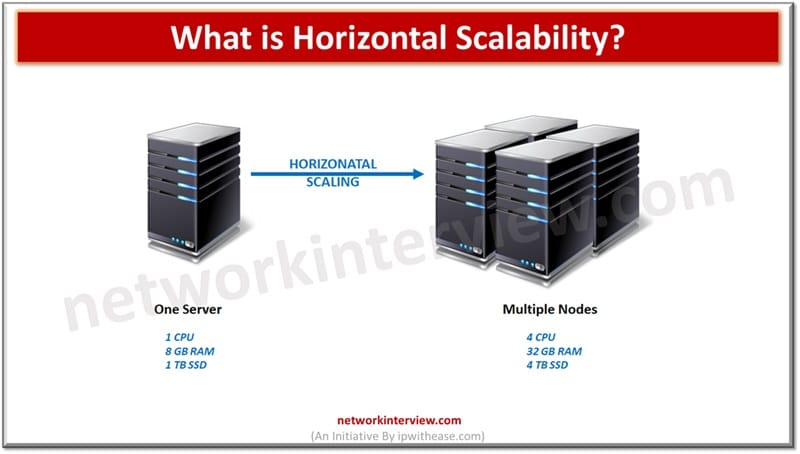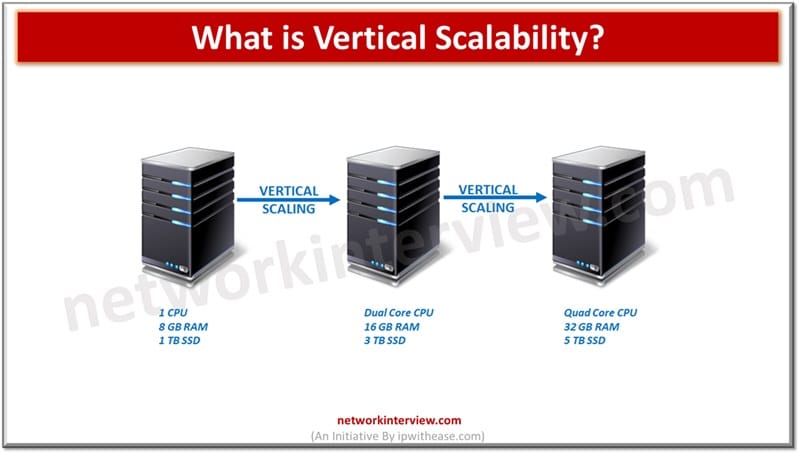
Horizontal vs Vertical Scalability: Network Infrastructure
When your business starts to grow and your applications require more accessibility, power, and performance, you may need to consider either scaling up or scaling out. It’s a common question that arises, and the answer depends on your specific needs and requirements.
Scalability in networking is essential to ensure that networks can meet the changing demands of an organization. It enables seamless expansion as new devices are added, additional users join the network, or network traffic increases due to business growth or new applications. Scalable networks can handle increased bandwidth requirements, provide consistent performance, and accommodate future growth without significant disruptions or bottlenecks.
In this blog, we will discuss the two main aspects of scalability in network infrastructure.
What is Scalability?
Scalability in networking refers to the ability of a network infrastructure to accommodate growth, handle increased traffic, and support additional devices or users without compromising performance or functionality. It involves designing and implementing network systems that can easily adapt and expand as the demands and requirements of the network grow over time.
Effective network scalability contributes to improved reliability, fault tolerance, and ease of management. It allows for flexible resource allocation, load balancing, and efficient utilization of network resources. Scalable network architectures and technologies enable organizations to adapt to evolving business needs, embrace new technologies, and support the expanding requirements of modern networking applications and services.
There are two main aspects of scalability in networking: Horizontal Scalability & Vertical Scalability.

What is Horizontal Scalability?
Also known as “scale-out,” it involves adding more resources, such as servers, nodes, or instances, to the existing system.
- Horizontal scalability focuses on distributing the workload across multiple resources, allowing for increased capacity and handling of higher traffic.
- It typically involves load balancing techniques to distribute the workload evenly among the added resources.
- Horizontal scalability is well-suited for distributed systems and environments with dynamic or unpredictable workloads.
- Adding more resources in a horizontally scalable system is usually straightforward, as the resources can be added independently and seamlessly integrated into the system.
- It offers improved fault tolerance and availability, as failures or performance issues in one resource can be mitigated by others.
- Examples of horizontal scalability include adding more servers to a web application cluster or scaling out virtual machines in a cloud environment.

What is Vertical Scalability?
Also known as “scale-up,” it involves increasing the capacity or capabilities of existing resources, such as servers, devices, or hardware components.
- Vertical scalability focuses on upgrading or enhancing the performance of individual resources to handle increased demands.
- It typically involves upgrading the hardware components, such as adding more memory, increasing processing power, or expanding storage capacity.
- Vertical scalability is often suitable for systems with predictable workloads or where a single resource can handle the expected growth for an extended period.
- Upgrading or expanding resources in a vertically scalable system may require downtime or interruptions to the existing system.
- It can provide higher performance and processing power, making it useful for applications that require significant computational capabilities.
- Examples of vertical scalability include upgrading a server’s CPU, increasing the RAM capacity of a database server, or expanding the bandwidth of a network link.
Comparison: Horizontal vs Vertical Scalability
Horizontal scalability and vertical scalability are two approaches to addressing the scalability needs of a system or infrastructure. Here’s a comparison between horizontal scalability and vertical scalability:
| Parameter | Horizontal Scalability | Vertical Scalability |
| Alternative Name | Also known as “scale-out” | Also known as “scale-up” |
| Defined | Involves adding more resources to the system, such as servers, nodes, or instances | Involves upgrading or enhancing the capacity or capabilities of existing resources |
| Distribution of Workload | Distributed among multiple nodes, with each node holding a portion of the workload | Single node holding the workload |
| Focus | Focuses on distributing the workload across multiple resources | Focuses on increasing the capacity or performance of individual resources |
| Load Balancing | Required to balance workload on multiple nodes | Not required (Single node) v(It involves upgrading hardware components, such as adding more memory or increasing processing power to handle workload) |
| Usability | Well-suited for distributed systems and dynamic workloads | Suitable for systems with predictable growth or applications with increased computational needs |
| Type of Architecture | Distributed | Any |
| Implementation | Hard | Easy |
| Upgradation | Resources can be added independently and seamlessly integrated into the system | Upgrading or expanding resources may require downtime or interruptions |
| Fault tolerance | Offers improved fault tolerance and availability through resource redundancy | Less fault tolerance as it has a single source of failure |
| Cost | Higher | Lower |
| Example | Examples include adding more servers to a web application cluster or scaling out virtual machines in a cloud environment | Examples include upgrading a server’s CPU, increasing the RAM capacity of a database server, or expanding the bandwidth of a network link |
Download the comparison table: Horizontal vs Vertical Scalability
Final Words
In summary, horizontal scalability involves adding more resources to distribute the workload and handle increased traffic, while vertical scalability involves upgrading or enhancing existing resources to handle increased demands. Horizontal scalability focuses on distributed systems and dynamic workloads, while vertical scalability is suitable for systems with predictable growth or applications that require increased processing power. Both approaches have their benefits and considerations, and the choice between them depends on factors such as system architecture, workload characteristics, and future growth expectations.



